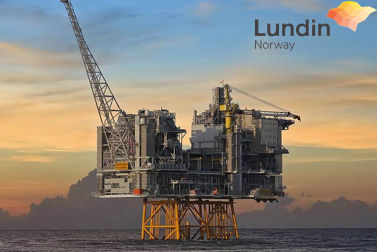Lundin Norway Chooses Huawei OceanStor 9000
To improve storage architecture in offshore oil and gas exploration
This is a Press Release edited by StorageNewsletter.com on December 19, 2018 at 2:20 pmLundin Norway A/S, an oil and gas exploration company, has selected Huawei OceanStor 9000 to upgrade their storage infrastructure for both unstructured and application data.

Boasting a multitude of oil and gas discoveries on the Norwegian shelf, the credit for Lundin Norway’s success belongs to an staff that enjoys carte blanche to use their knowledge and skills – making Lundin Norway arguably the best exploration company in the world.
Lundin owns many oil fields, earns an annual income of $ 2 billion, and ranks as the second largest oil company in Norway. The company currently holds ownership interests in 61 production licenses on the Norwegian Shelf, and was awarded operatorships for 34 of those.
New Reservoir Simulations Need More storage
The volume of data collected in the oil and gas industry is growing. With target exploration fields shifting from conventional to unconventional areas – from land to sea, and even polar regions – the explorers are becoming increasingly dependent on IT.
More data requires better data mining utilization, which results in a higher likelihood that an organization will find oil resources and control the market. To obtain more data and generate more profit, Lundin has adopted new reservoir simulation technologies that overcome many of the technical and environmental difficulties faced by offshore exploration, which in turn improves mining efficiency.
New technologies generate high volumes of data. Lundin worried its current storage architecture cannot meet its growing storage requirements. In addition, 60% of Lundin’s data is cold data. The scalability of earlier storage system on the live network was insufficient and didn’t support tiered storage; the result was that all the company’s data was stored on expensive SAS disks, which resulted in high TCO. Lundin’s top concerns were low data processing performance, high power and maintenance costs, and reliable DR.
Objectives were to upgrade their storage infrastructure to fulfill the following requirements for both unstructured and application data:
- Lower costs
- Apply secure, flexible, scalable, and cost-effective solutions
- Meet future storage needs
- Coexist with cloud services
Symmetrical, Distributed File Storage Solutions
Huawei ICT solutions have been applied in 45 countries and regions around the world ad serve fourteen of the top 20 oil and gas companies.
Lundin’s CIO and his team came to appreciate Huawei’s attention to the company’s pain points with solutions for their growing storage demands. The flexible scale-out architecture of the OceanStor 9000 meets future requirements for storage expansion, and includes the InfoTier function that separates the processing and storage for large amounts of cold data on a live network.
Located in Lysaker, near Oslo, Norway, Lundin’s primary datacenter (LDC3) has the rack space available to co-locate the new NAS platform with the current storage solution.
The OceanStor 9000 symmetrical distributed file storage systems supports performing R/W access, smooth scale-out from three to 288 nodes, up to 100PB of capacity in a single file system, and includes Huawei’s proprietary InfoTurbo acceleration technology. As a result, OceanStor 9000 systems support simplified management and maintenance, and eliminate data silos caused by multiple namespaces. The capacity and performance characteristics of OceanStor 9000 are designed to alleviate all customer storage concerns.
Meanwhile, the OceanStor 9000 InfoReplicator system provides data protection for erasure codes that are set and controlled at the directory level. Folders or files can be replicated between multiple OceanStor 9000 storage systems through IP links over LANs or WANs.
The storage system supports and configures remote replication in case data cannot be recovered for any reason. The Lundin project requires a RPO of one day, with a minimum RPO of 30 minutes.
Tiered Storage for Deep Exloration
The OceanStor 9000 InfoTier Dynamic Storage Tiering (DST) feature stores and migrates files between devices with different performance levels according to file properties. In this way, InfoTier enables user-specific processing speed and capacity assignments for ensuring optimal space utilization, enhanced access performance, and reduced deployment costs.
The tiered-storage features of the OceanStor 9000 solution addresses Lundin’s requirement to manage hot and cold data separately, improve storage efficiency and data analysis, and boost processing performance.
The Lundin project plan determined that the migration of to the system would be completed in three months. Not only did the OceanStor 9000 deployment succeed in avoiding daily penalties, the project was completed in half the time.
Huawei and the OceanStor 9000 are benefiting the company
in the following ways:
- Enable linear performance improvements by dynamically adding nodes to meet projected service growth.
- Reduced TCO by using the OceanStor 9000 tiered storage functions.
- Simplified configurations and graphical support for systems deployment.
- Increased egress bandwidth through capacity expansion to avoid bandwidth bottlenecks and meet long-term customer requirements for rapid growth.
“Huawei OceanStor 9000 occupies only 1.2 cabinets, 73%less than the 4.5 cabinets used by the old system, saving precious space. At the same time, Huawei needed only one month to migrate 1PB of data to the OceanStor 9000 platform, which is 70% faster than previously possible. We were surprised at Huawei’s product capabilities, and even more so by Huawei’s professional services,” said Martin Leslie, IT manager, Lundin Norway.
With large-scale prospects like the Gohta and Alta fields in the Barents Sea, Lundin has confirmed the value of new exploration models and is providing important findings that they believe will lead to a profitable era of oil and gas production.
Huawei’s storage solutions are well positioned to play an important role in the science and engineering to better understand the geology of marine environments for continental shelf and seabed topography, earthquake prediction, and the commercial development of oil and gas reserves.












 Subscribe to our free daily newsletter
Subscribe to our free daily newsletter
